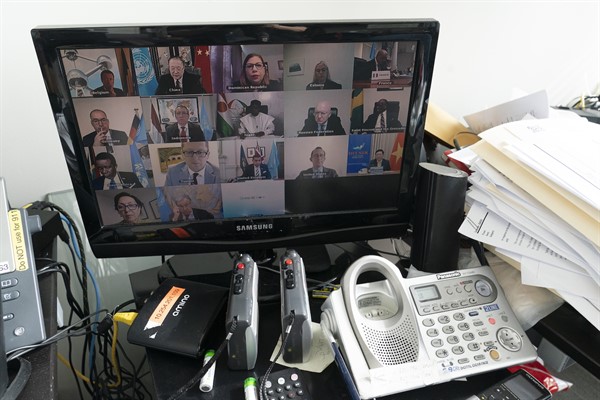As the world gradually distributes COVID-19 vaccinations and starts to reevaluate coronavirus-related restrictions, many in the international community are pushing for societies to go back to “normal.” Leaders at the helm of the international system want to return to the comfort zone of structured interactions in their New York offices; they are tired of days filled with back-to-back Zoom meetings and the chaotic distractions of working from home. But should we really welcome “normal” back with open arms?
The pandemic has uprooted everyone’s usual work patterns. This has been traumatic, certainly—but also disruptive in positive ways. Much of what I achieved personally over the past year, for instance, would not have been possible without the shift to remote work. I graduated from university and became a United Nations Foundation Next Generation Fellow—a global advocate for young people engaging with changemakers around the world—while sitting in my parents’ kitchen.
In the same way, the pandemic has challenged our perception of what the international system can achieve in short timeframes, especially through solely virtual interactions. Despite many lockdowns and canceled conferences, it took just three months for the scientific community to come together and sequence the SARS-CoV-2 virus, and the first vaccine was approved only 326 days later.

